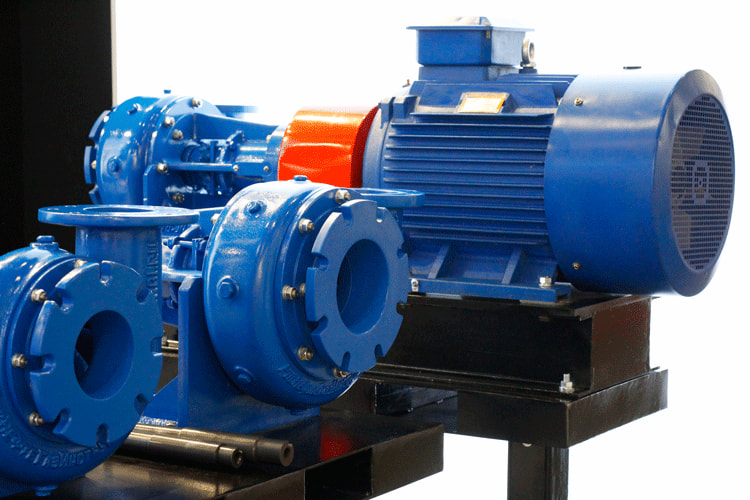
Over the past 20-plus years in this industry, there have been many modifications to pumping equipment. Some have been extensive, and others have been simple modifications that saved time and money.
Modifications for Gear Pumps
Transportation trucks often haul a variety of products—anything from crude oil to saltwater to diesel fuel. Transportation trucks in the Southwestern United States are typically powered by power takeoff (PTO) driven helical gear pumps. To understand this modification, users should understand how the helical gear pump works. Fluid enters through the suction port and travels around and between the gears in the housing. At the same time, the fluid being pumped is lubricating the bushings that the shaft rides in on. While there are several options of materials for the bushings, sometimes they are not feasible.
When the end user is operating steel shafts with bronze bushings, the simple modification is for grease zerks to be installed at each bushing. This allows the end user to grease the bushings when they are pumping a nonlubricating fluid, such as saltwater. Without some sort of lubrication, the shafts would gall to the bushings or cause the pump to have premature wear and see extreme temperatures that damage the bushings. Aftermarket service providers have seen success with this modification.
Simple AODD Pump Modifications
Another simple modification is for air-operated double diaphragm (AODD) pumps. One issue is chemical and temperature attack on the balls of the pumps. This causes swelling, and the balls stick in the manifolds on the suction and discharge side. The diaphragms are not affected in the same way the balls are as they are flat, and the shaft is moving them back and forth. The balls are moving up and down with the fluid, and they tend to get stuck when the pressure reaches the swollen ball.
The modification is to change out the ball material. A good option for an oilfield, and some industrial customers, has been polytetrafluoroethylene (PTFE). PTFE is not always a good option in some applications as it is considered “nonforgiving” since it is inflexible, unlike Buna, Santoprene, Viton, Geolast, Hytrel and other soft rubber materials. PTFE is a great alternative material for the four balls in the pump. It is less likely to swell and get stuck in the manifold. Even though PTFE may not work for all applications, it will work in quite a few different applications where PTFE is compatible with the pumped materials.
Simple Modifications for Skids
With Environmental Protection Agency (EPA) and Occupational Safety and Health Administration (OSHA) regulations being strict in the industrial and oilfield divisions, every drop of fluid on the ground creates a huge issue. Even with drip pans, users still must clean out and move the leaked product somewhere else. This typically results in the use of oil absorbent rags/towels, absorbent materials sprinkled on the skid or some other form of removal of the leaked product. Building a removable drip pan that can be easily removed allows the end user to empty the leaked product into a containment bucket for safe disposal off-site. This reduces the amount of waste and the additional cleanup required. The removable drip pan also allows the user to be in control of how they discard the leaked material and allows for a quicker cleanup of the site. In turn, this will allow the end user to stay in compliance with EPA and OSHA.

